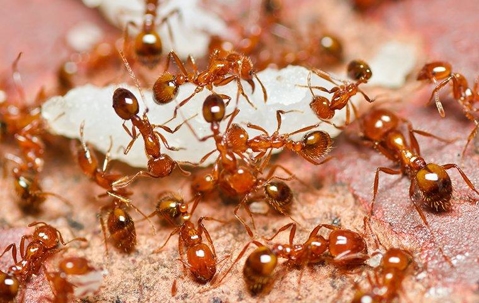Fire ants are dangerous, and in rare cases, they can prove deadly. Although most people experience an allergic reaction from fire ant bites in the form of burning and itchiness and a raised welt at the bite site, a small percentage will experience a more severe reaction. This reaction may vary from a worsening bite site that becomes increasingly more painful and swollen over a few days and feels hot to the touch-to anaphylaxis, which is life-threatening if treatment isn’t administered immediately and correctly.
Unfortunately, fire ants flourish in Pensacola and throughout Florida state due to the high temperatures and equally high humidity and moisture here. And despite their problematic and potentially dangerous presence throughout the Sunshine State, they’re not native here. Instead, fire ants first made contact with United States soil in the 1930s, when they were inadvertently imported into Alabama from South America. They’ve continued to spread ever since and mainly inhabit the Southeastern seaboard.
Read on for more about fire ants, including how to identify them and how difficult they are to rid of. Included are tips on preventing an infestation.
How To Identify Fire Ants
Fire ants are small insects, ranging from 1.6 to five millimeters in length. They have a variety of colors, from mahogany to reddish black, and have six legs and a stinger, which they use to inject their victim with venom. Fire ant venom is an alkaloid, which causes pain and a burning sensation and a red welt and pus at the site of the bite.
The diet of fire ants ranges from plant seeds and honeydew melon to birds, mammals, and reptiles and microscopic organisms, ticks, boll weevils, earthworms, and spiders. They are commonly found on soiled clothing and in piles of laundry, as they’re attracted to the sugars and oils in the residue that humans leave behind.
Are Fire Ants Hard To Get Rid Of?
Fire ants are nearly impossible for homeowners to eradicate on their own, and that’s due to their nesting behaviors. The size of a home’s fire ant infestation can double or triple in size over the course of a few months, and that’s due to a process known as “budding.” Fire ants, as a species, develop into colonies, which break off into other colonies, and so on, with each new colony taking over its area. So even if you feel that you eradicated one area of the home that showed signs of an infestation, aggravating the existing colonies will only encourage budding to occur.
Tips On Fire Ant Prevention
To effectively rid all the fire ants on your property, it’s best to call the professionals—and do so sooner rather than later, so the fire ant population doesn’t have a chance to grow. But to keep these pests away from your home and property moving forward, consider the following three tips:
- Eliminate Potential Points Of Entry: Fire ants are primarily yard pests, but they will venture indoors if there’s an easy way inside. Cracks in the foundation and exterior-facing walls may be bringing fire ants and other pests into your home. Make necessary repairs to keep pests out.
- Maintain Your Yard Space, Especially Around Your Home: Fire ants create mounds in the dirt caused by building tunnels underneath and pushing up the soil. Unraked leaves, excess debris, and overgrown grass, especially within a two-foot area of your home, can encourage these pests to take shelter there.
- Keep Trash Concealed And Don’t Leave Behind Sugar, Fruits, And Foods: Fire ants are attracted to sugary foods, so accidentally leaving a juice cup or fallen piece of candy outside will attract more of them to your yard. Keep trash stored in an air-tight container with a lid.
Take care of your fire ant infestation right away by calling the professionals at EnSec of Florida. We are committed to serving the individual needs of our residential clients and developing a pest control plan that is tailor-made for them. Contact EnSec today for the guaranteed protection you need from fire ants and other pests.

